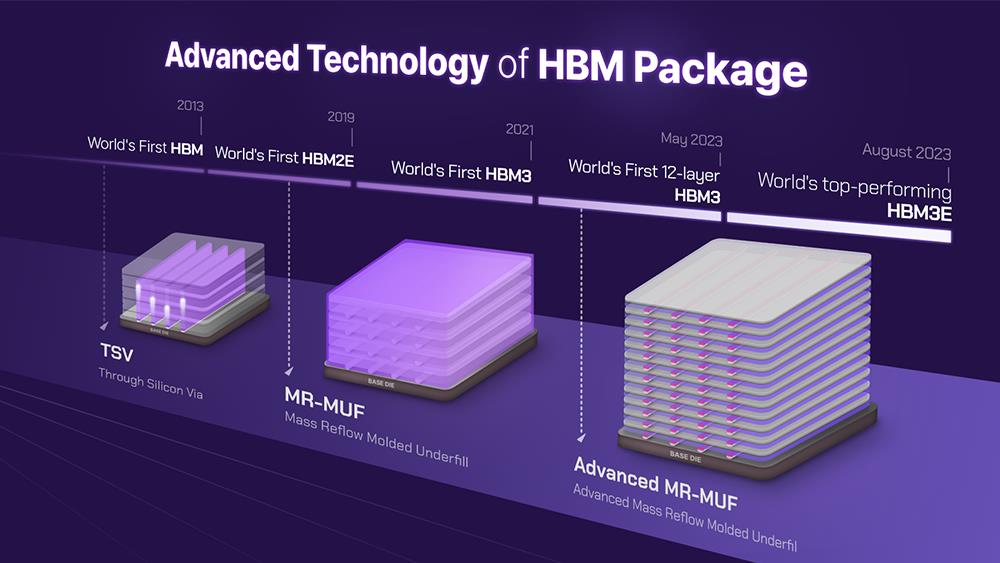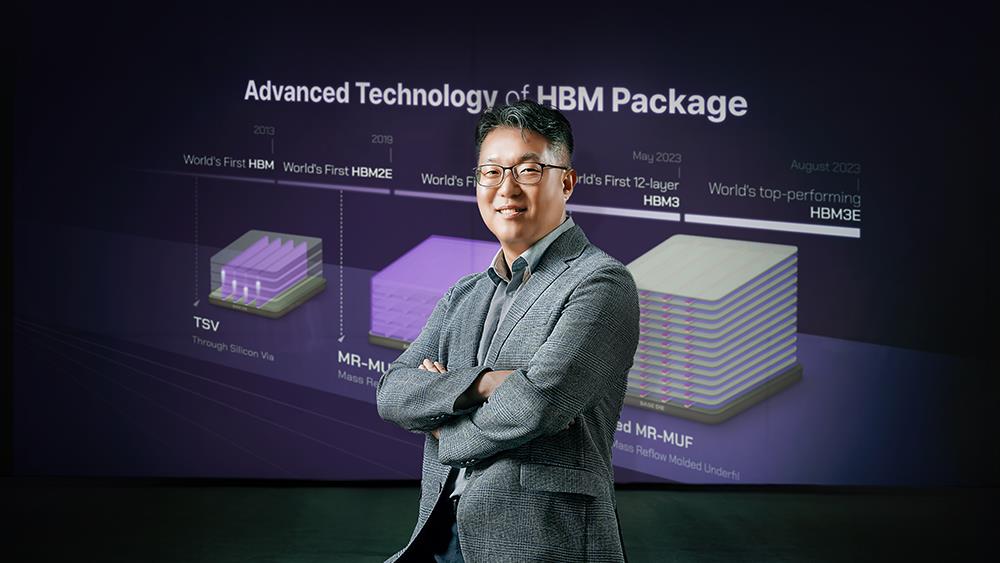
This image provided by SK hynix Inc. shows packaging technologies for high bandwidth memory. (Yonhap)
SEOUL, Aug. 5 (Korea Bizwire) – SK hynix Inc., the world’s second-largest maker of memory chips, said Monday it will focus on developing advanced packaging technologies for next-generation high bandwidth memory (HBM) chips, aiming to solidify its leadership position in the booming artificial intelligence (AI) chip market.
HBM is a high-performance DRAM in high demand, particularly for U.S. AI chip giant Nvidia Corp.’s graphics processing units, which are key components for AI computing. SK hynix is leading the market, with fifth-generation HBM3E products. Its latest 12-layer HBM3E products are scheduled for mass production in the third quarter.
The production of HBM involves stacking multiple DRAM chips, making packaging technologies essential to address challenges such as heat dissipation and warpage.
Lee Gyu-jei, who heads packaging development at SK hynix, highlighted the importance of next-generation packaging technologies, like hybrid bonding. These technologies are designed to allow for higher chip stacking, and boosting performance and capacity, while keeping product thickness within standard specifications.
“Although heat control is still a challenge due to the narrower gap between the chips, these new packaging technologies are expected to solve the issue and meet the increasingly diverse performance needs of customers,” Lee said in an interview with the company’s newsroom, emphasizing that the importance of the timely development of such technologies is crucial to meeting the diverse needs of the market.
Lee attributed SK hynix’s leadership in the HBM market to its development of key packaging technologies, including mass reflow-molded underfill (MR-MUF), which was introduced with HBM2E in 2019. MR-MUF injects a liquid protective material between stacked chips, significantly reducing heat.

Lee Gyu-jei, who heads packaging development at SK hynix Inc., is seen in this photo provided by the company. (Yonhap)
He said the mass production of HBM2E with MR-MUF became a “game changer” in the HBM market and helped SK hynix lead the industry in the face of the AI era.
For the fifth-generation HBM3E, particularly the latest 12-layer HBM3E, SK hynix has developed the Advanced MR-RUF packaging technology, enhancing heat dissipation for the increased number of stacked chips.
Advanced MR-MUF allows for chip stacking that is 40 percent thinner than previous generations with less heat and warpage.
Lee noted that Advanced MR-MUF will be applied to a wider range of applications, further solidifying SK hynix’s leadership in HBM technology.
The company plans to ship 12-layer HBM4 in the second half of next year and is preparing for a 16-layer HBM4 in 2026, depending on customer demand.
“SK hynix will continue to enhance its existing Advanced MR-MUF with excellent heat dissipation performance, while also securing new technologies,” he said.
(Yonhap)






